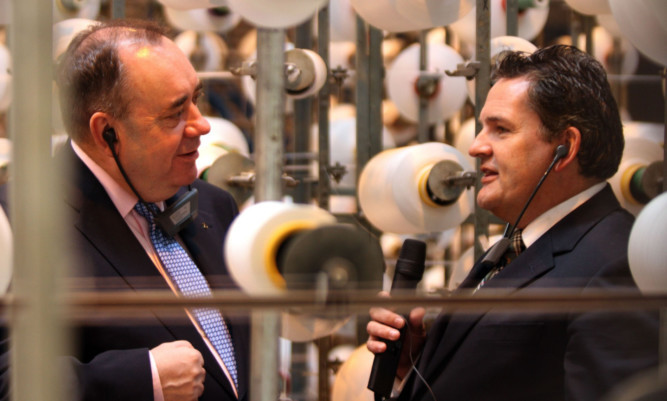Employee-owned performance textiles group Scott and Fyfe returned to the black last year despite a challenging trading environment.
Newly filed accounts show the Tayport firm, whose history can be traced back more than 150 years, saw revenues increase by almost £850,000 to £10.13 million in the year to December 31.
The company, whose largest market is the UK but exports worldwide, also moved back into profit during the year, with a £140,000 pre-tax return compared with a £678,000 loss in the year previous.
The reports show an average of 78 people worked within the business during the year, the bulk of which were involved in the manufacturing process.
Since the year-end, the company has taken on around a dozen new employees and its recruitment drive is continuing with current vacancies for machine operators and in business development.
Each member of staff has a personal interest in the company succeeding after long-term owners, the Tough family, sold out in 2012 and a new employee ownership structure was introduced.
“Last year was dominated by a difficult trading environment but real progress in terms of profitability, the emerging success of the innovation-driven strategy and the implementation of a genuine employee-ownership culture were all very positive developments,” chairman Nick Kuenssberg said in his statement to the accounts.
“While this return to profit is to be celebrated there were several non-recurring credits, including the sale of the 25% holding in Extenday, disposal of redundant machinery and the surplus on final closure of the loss-making Chinese subsidiary.
“The drive for new products in new markets led by the POD directors (flooring, loop and abrasives, pipe fabric technology and composites) is beginning to pay off and we look to further success as opportunities from the £15m sales development funnel are slowly brought to market.
“Based on a strategic review in November 2014, the main thrust in 2015 will be to improve the internal organisational structure with benefits to development focus, production costs, productivity, quality, scheduling, maintenance, waste and recruitment as the age profile is reduced and numbers employed increased.”
